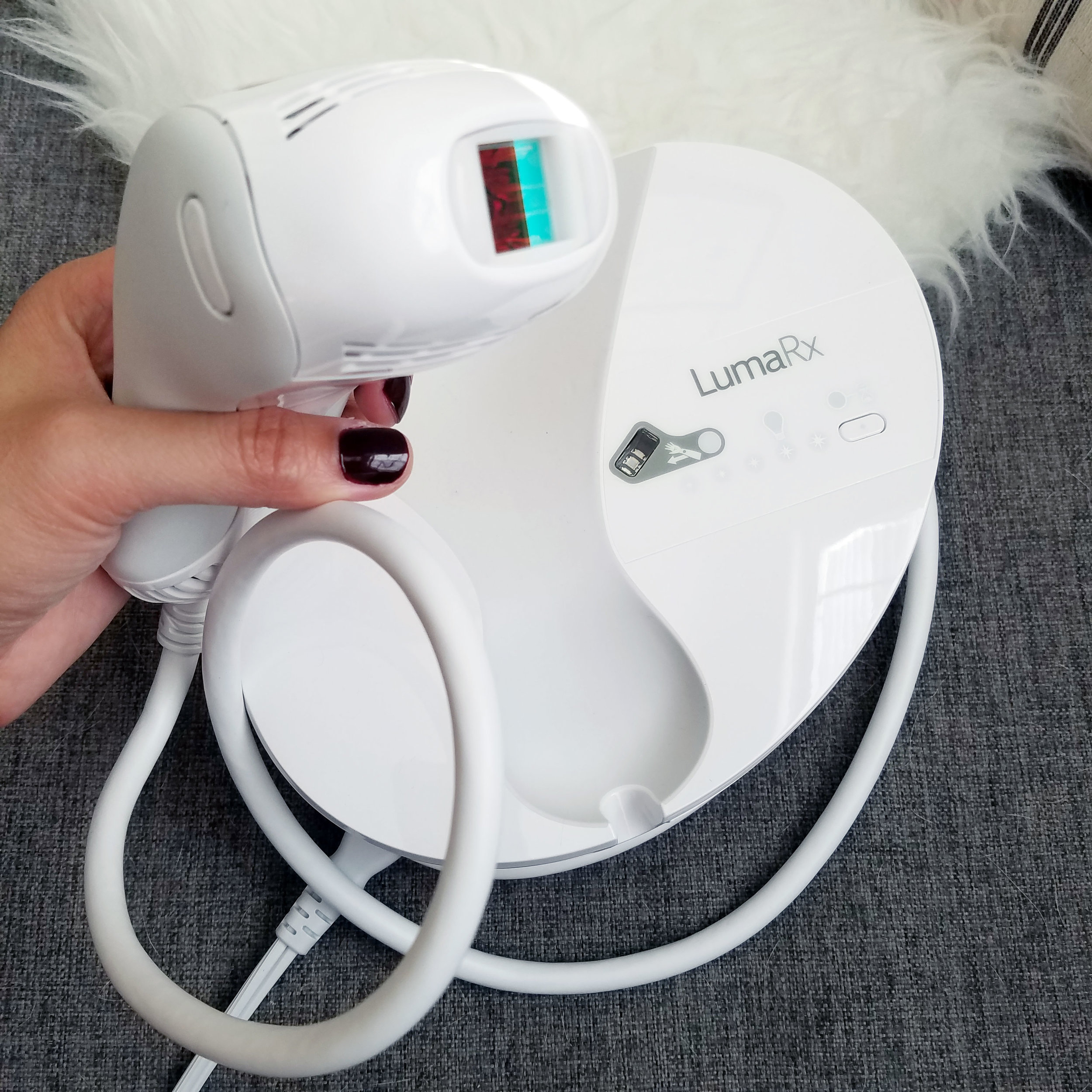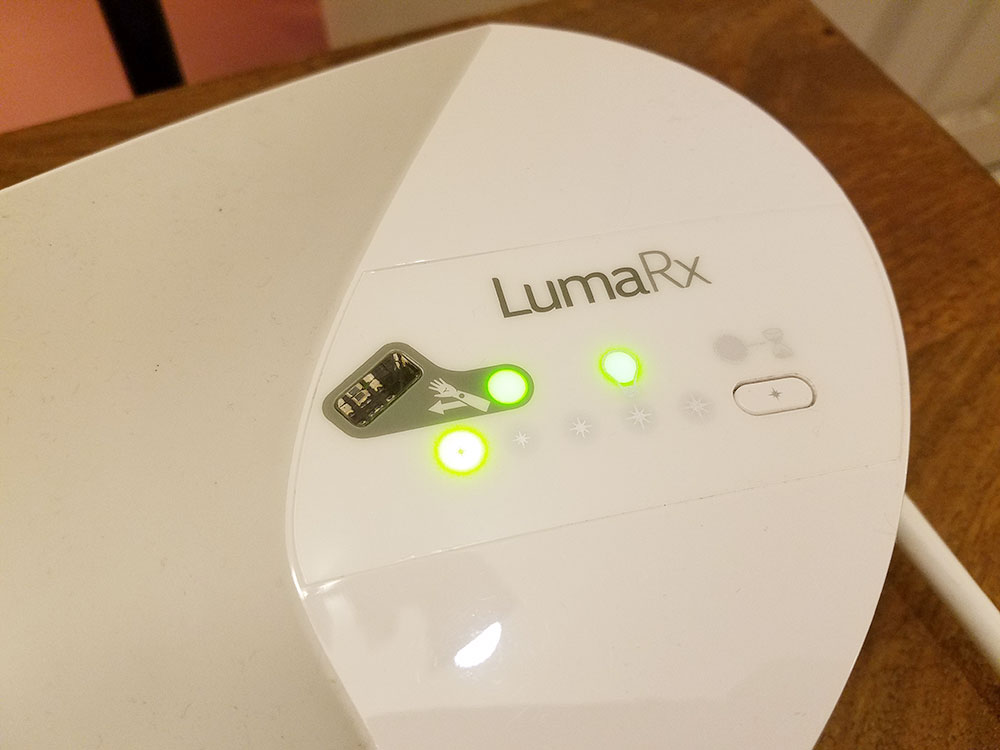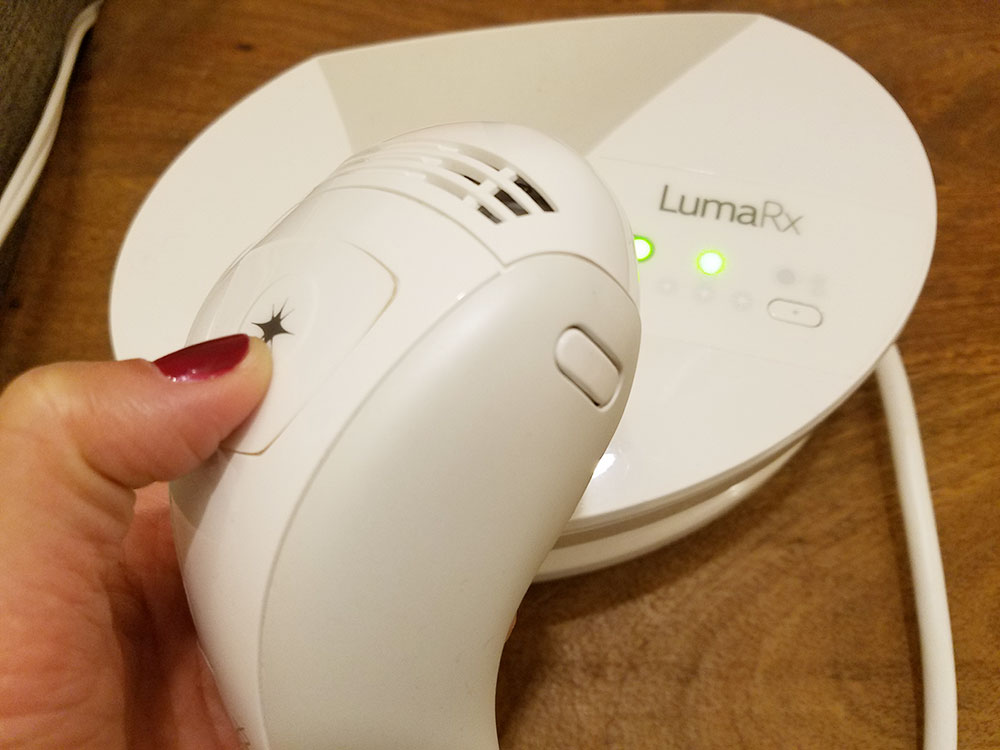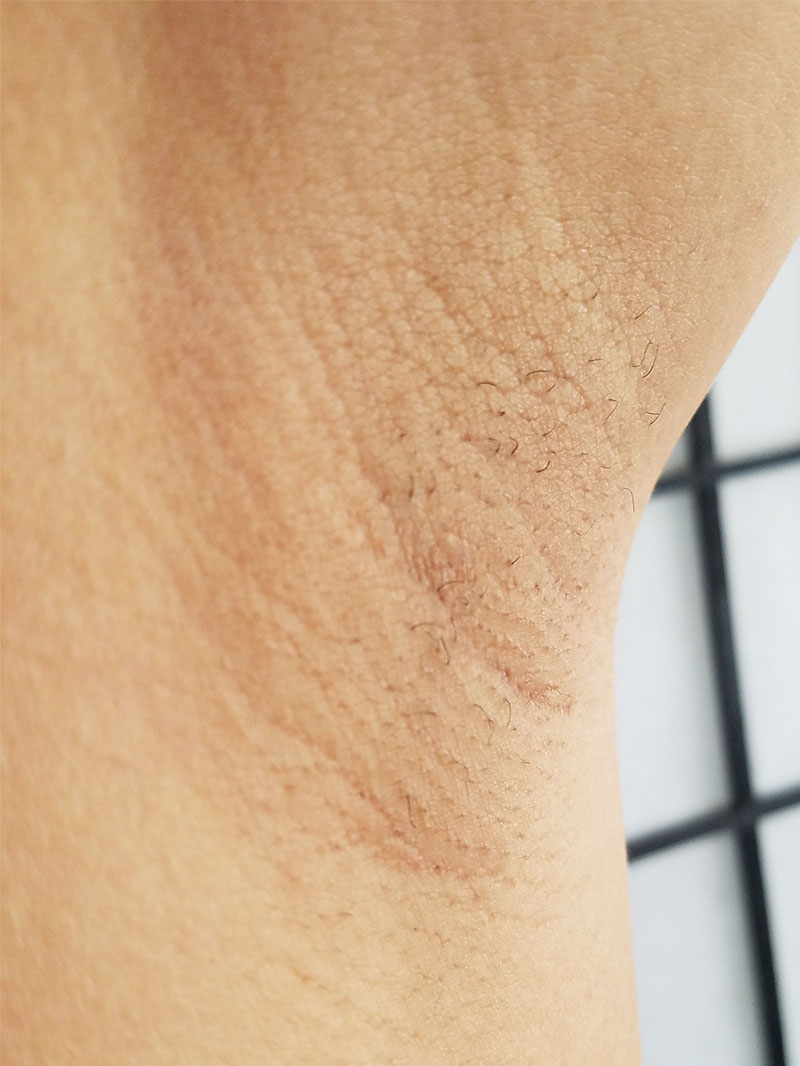LumaRx: I Tried At-Home IPL Hair Removal For The First Time
I'm pretty basic when it comes to hair removal: old-fashioned shaving, tweezing, and professional waxing are about as adventurous as I get. My hair situation simply doesn't bother me enough to try higher-tech treatments like laser and IPL; plus, I'm too lazy to spend the extra time (and money) on yet another doctor's office visit.
However, give me any at-home gadget and I'll dedicate an entire day to figuring it out — so when I had the chance to try the LumaRx Full-Body Hair Removal System, you can bet I was all about playing skincare guinea pig.
The plug-in IPL device costs $449 and is approved by the FDA to remove body hair (including on the arms and legs) and female facial hair. It comes with two caps (one to treat the body and another for the face), a flash cartridge (which needs to be replaced after 65,000 flashes), a lint cloth for cleaning the caps, and an instruction manual.
For those not ready to shell out for the full-body LumaRx, the skincare company also makes a Mini version for $379.
The Difference Between IPL vs. Laser
But first, it's important to talk about the difference between laser and IPL (intense pulsed light) hair removal, which both use light to say buh-bye to hair.
Laser treatments use a single concentrated beam of light that's absorbed by the pigment, making it more precise when targeting hair and causing enough damage to the follicle to prevent hair from growing. It costs between $75 to $360 depending on the treatment area and takes approximately three to seven sessions to keep hair away for up to 6 to 12 months. Though one Vogue writer found the experience to be "excruciatingly uncomfortable," there are now laser hair removal treatments that are pretty easy and painless and work on all skin tones.
IPL, on the other hand, uses a broad spectrum of light to remove unwanted hair and treat sun damage, broken capillaries, and more. According to cosmetic dermatologist Rebecca Fitzgerald, MD, the energy emitted by the IPL wavelength is "absorbed by unwanted melanin and small broken blood vessels. The heat absorption causes the melanin cells to shatter and the broken vessels coagulate."
LumaRx's IPL device is also only effective on fair to olive skin tones and dark, pigmented hair — which means it's not as suitable for blonde, red, gray, or white hairs or dark skin. (If you have any of the above, you'll need an IPL device equipped with ELOS technology, which can treat all skin tones and types.) According to LumaRx, treated hair usually begins to fall out within 7 to 10 days.
Using the LumaRx
For comparison purposes, I used the LumaRx on just my right underarm about three to four times a week for an entire month. Since skin must be clean, dry, and shaved for each session, I used it every time after showering. (Yup, I don't bathe every day, and here's why you shouldn't shower daily, too.) As Nurse Jamie previously explained to Mixed Makeup, it's important to shave (not wax or pluck) your hair because the bulb needs to be intact in order for an IPL or laser treatment to work.
First, a quick run-down on how the LumaRx device works. After switching on the base unit, you'll hear the device's fan start up, followed by three beeps. Next, you need to ensure your skin is suitable for treatment by pressing an area of your skin onto the skin tone sensor, which will beep and literally give you the green light if you're good to go. (I made a fist with my hand and placed it on the sensor, but you can also use your forearm or other area of the skin.) If your skin tone isn't suitable, the sensor will turn yellow and the device will buzz. Then it's time to select the IPL energy level.
Since I'm an IPL and laser virgin, I chose the lowest setting and did the first session at night to make sure my sensitive skin didn't have a reaction. Finally, it was time to zap away that hair!
Using the hand piece, I pressed the cap onto my armpit and pushed the top button, which produced a flash of light. As with many things, the first time was a little awkward (hey, get your mind out of the gutter!) and I actually yelled "Ouch!" I was more startled by the pain than anything else and on a scale of 1 to 10, it was definitely just a 1. I'd liken the pain to a tiny rubber band snapping against your skin, except maybe half of the intensity.
Per the instructions, I used a grid-like pattern to ensure even coverage (treating the same spot multiple times is a no-no). Following my first nighttime treatment, my skin appeared normal the next morning so I continued to use it over the course of the month at the lowest setting. After about two weeks, I noticed fewer hairs on my right underarm (and a very mismatched left pit).
And now, the moment everyone has been waiting for: before-and-after photos of my armpits! (Sorry, internet.) Since I'd prefer to keep images of my untamed left underarm to myself, below is how it looks unshaven for one week when compare to my LumaRx-treated right side. And yes, you can click on each photo should you need a close-up for further convincing. (You're, uhh, welcome?)
The Verdict
Since this was my first time ever using light therapy for hair removal, I'm not exactly an expert on recommending IPL over laser. However, if you, like me, have olive skin or lighter and dark or coarse hair, the LumaRx is ideal for you. And if you, too, are unadventurous in the hair department, love hands-on treatments, and have enough tech skills to operate an iPhone, then this device will be a cinch for you to use.
Have you tried the LumaRx Full-Body Hair Removal System or another at-home IPL device? Share your experiences in the comments below!
Curious about laser hair removal? Watch the episode of The SASS below to learn more about a pain-free treatment that works on all skin tones.














